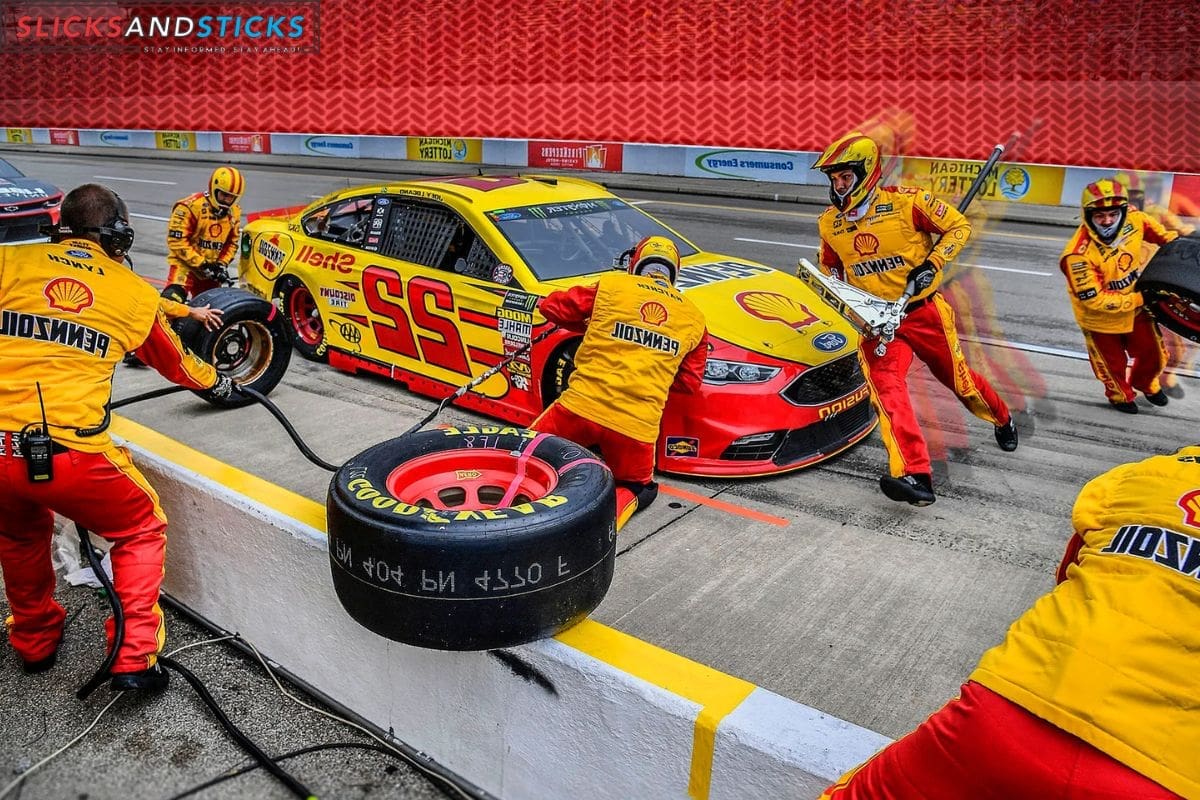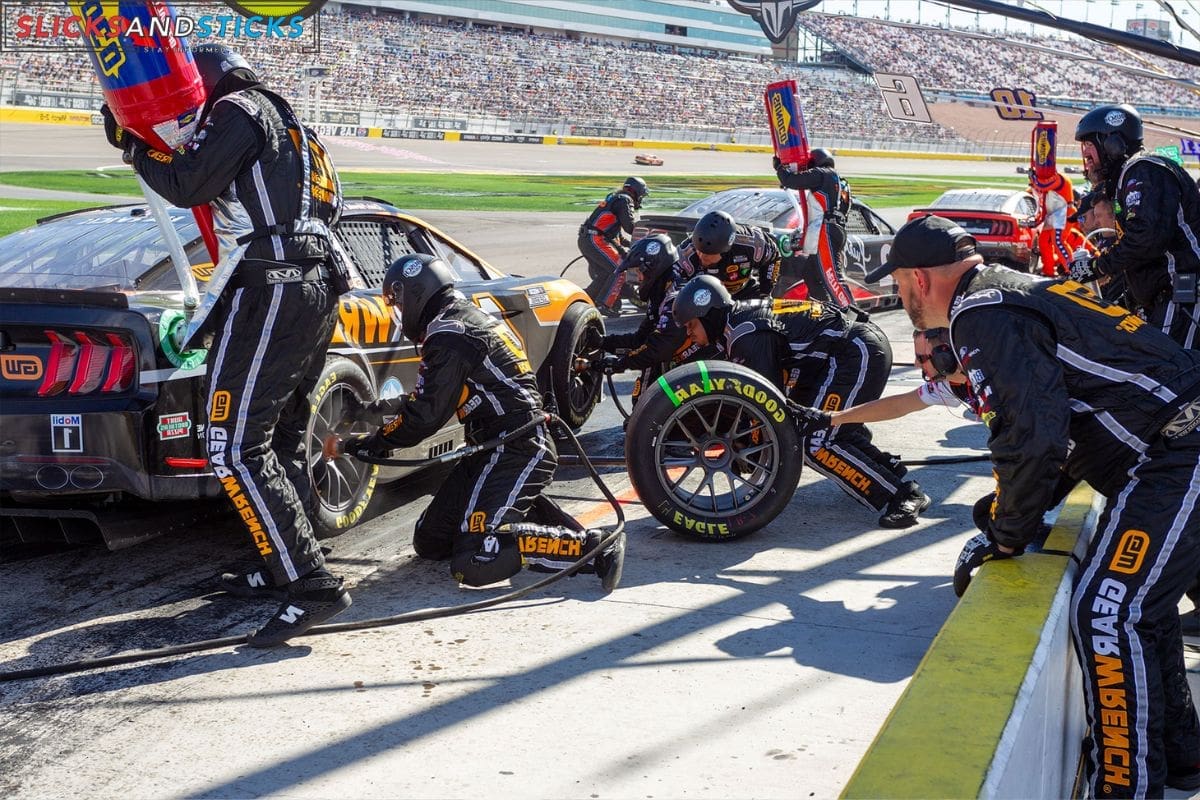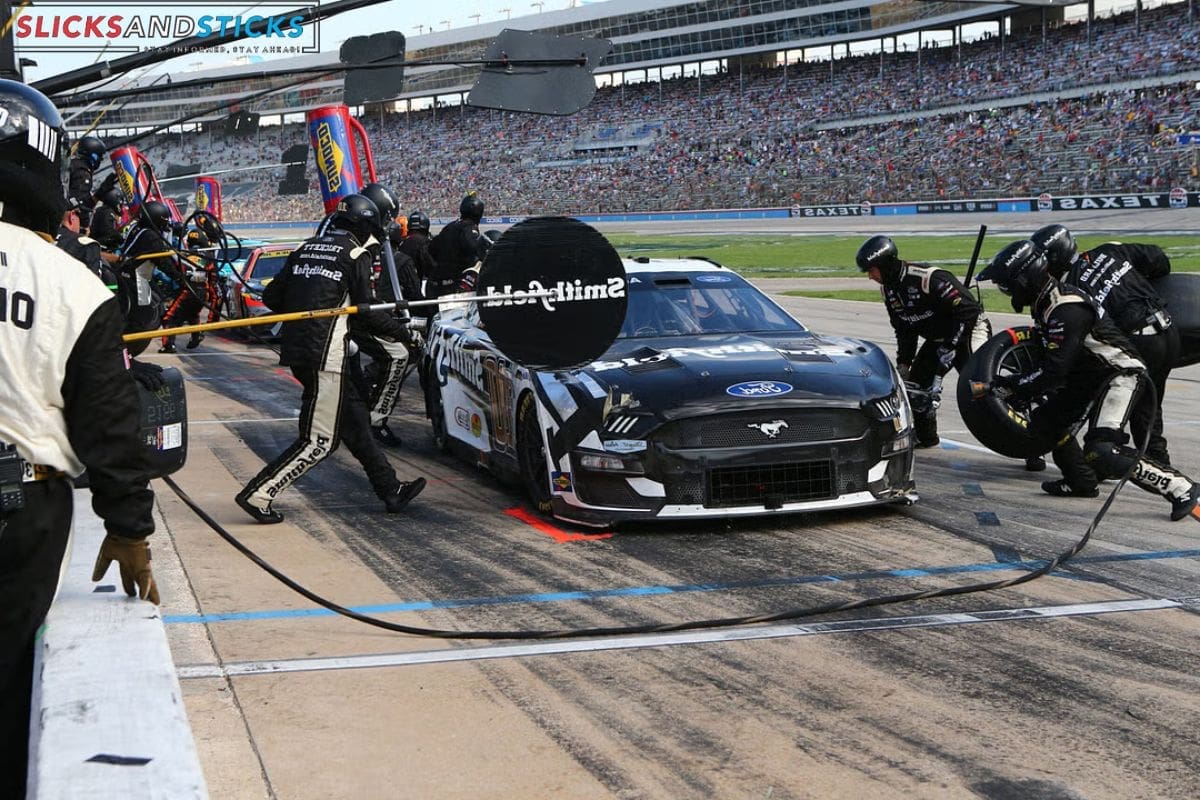Pre-race Pit Preparation: In the world of NASCAR racing, where split-second decisions and lightning-fast reactions can make all the difference, pre-race pit preparation emerges as the linchpin that separates champions from the rest of the pack.
As the engines roar and the anticipation builds, it is the meticulous planning, strategizing, and flawless execution behind the scenes that can ultimately determine the outcome of a race.
The pre-race pit preparation is a complex ballet of coordination, communication, and calculated risks, where every second counts and every detail matters.
From analyzing race dynamics to adapting to the challenges brought by Next Gen cars, the pit crew’s ability to seamlessly navigate the chaos of the pit stops can be the ultimate game-changer.
Join us as we go through the intricacies of pre-race pit preparation and explore how it holds the key to victory in NASCAR races.
Key Takeaways
- Well-planned pit stops influence race outcomes
- Meticulous planning ensures accurate pit lane positioning
- Race dynamics shape pit strategies
- Next Gen car presents challenges for drivers and requires extensive practice and preparation
The Increasing Role of Pit Strategies in NASCAR
The role of pit strategies has become increasingly pivotal in NASCAR races. The precise execution of well-planned pit stops now holds significant influence over the outcomes of these high-speed competitions.
With the advent of next-gen cars, pit crews have had to adapt and develop new strategies to gain a competitive edge. Understanding the precise spot for pit stops is crucial for swift and effective pit crew operations.
Pit crews analyze a multitude of factors including tire wear, fuel levels, and track position to determine the optimal time and frequency for pit stops. A well-executed pit strategy can make the difference between victory and defeat. A quick and efficient pit stop can enable a driver to gain positions on the track and ultimately secure the checkered flag.
As NASCAR continues to evolve, the importance of pit strategies is only expected to increase. It has become a critical aspect of every team’s race preparation.

Preparation and Planning for Pit Stops
With the increasing importance of pit strategies in NASCAR races, meticulous preparation and planning for pit stops have become paramount for teams seeking a competitive edge on the track.
Before races commence, pit crews undertake meticulous planning to ensure accurate pit lane positioning. Red tapes are used to mark individual parking spaces along the pit road, determining the car’s positioning. These markings play a crucial role in ensuring that the jack handle can adequately extend to service the vehicle during pit stops.
Pit crews must carefully consider the positioning of their pit stalls to minimize the time it takes for the car to enter and exit the pit lane. This attention to detail can make a significant difference in the outcome of a race, as even a fraction of a second gained or lost during a pit stop can have a substantial impact on a team’s performance.
Role of Race Dynamics on Pit Strategies
Race dynamics play a pivotal role in shaping pit strategies and determining the optimal timing for pit stops. The ebb and flow of a NASCAR race can greatly influence the decisions made by the crew chief and the driver.
For example, a caution period can present an opportunity for teams to make pit stops for fresh tires and fuel without losing too much track position. On the other hand, if a driver has built a comfortable lead, they may choose to stay out on the track and delay their pit stop to maintain their advantage.
Additionally, race dynamics can also impact pit strategy in terms of fuel conservation. If a race is running caution-free for an extended period, teams may opt for a fuel-only pit stop to gain precious track position.
Ultimately, understanding and adapting to the ever-changing race dynamics is crucial for a successful pit strategy in NASCAR.

The Challenges Brought by Next Gen Cars
Introducing the Next Gen car has presented a series of challenges, particularly for drivers like Ricky Stenhouse Jr. from JTG Daugherty Racing. They must now navigate unique pit entry procedures and seamlessly execute gear shifts to accurately reach their designated pit box.
This shift in pit procedures has forced drivers to adapt and fine-tune their skills to ensure a smooth pit stop. With the new car design, drivers have to downshift and change gears while entering pit road, which requires precision and split-second decision-making. Any misstep can result in a missed pit box, costing valuable time and positions on the track.
As a result, teams have had to focus on extensive practice and preparation to master these new challenges and maximize their pit stop efficiency. The introduction of the Next Gen car has undoubtedly added an extra layer of complexity to pit strategies, making it an essential aspect of pre-race preparations for NASCAR teams.

The Intricate Workings of the Pit Crew
The success of a NASCAR race is not solely dependent on the skills of the driver, but also on the intricate workings of the pit crew. These unsung heroes play a crucial role in executing lightning-fast pit stops that are essential for maintaining the car’s competitiveness. The pit crew’s responsibilities go beyond simply changing tires and refueling the car. They are responsible for making critical adjustments to the car’s setup, performing repairs, and communicating valuable information to the driver. To give you a glimpse into the complex nature of their work, here is a table showcasing the various roles within a typical pit crew:
| Position | Responsibility |
|---|---|
| Crew Chief | Oversees the entire pit crew and makes strategic decisions |
| Tire Changer | Rapidly changes the car’s tires during pit stops |
| Fueler | Efficiently refuels the car |
| Jackman | Raises and lowers the car during pit stops |
| Spotter | Provides real-time information to the driver |
The coordination and precision required by the pit crew are what truly make them an indispensable part of the NASCAR racing experience.
Conclusion of Pre-race Pit Preparation
Pre-race pit preparation plays a crucial role in winning NASCAR races. The increasing importance of pit strategies, the need for meticulous preparation and planning, and the influence of race dynamics all contribute to the significance of a well-prepared pit crew.
With the introduction of Next Gen cars, new challenges arise, making it even more essential for teams to focus on the intricate workings of the pit crew. By prioritizing pit preparation, teams increase their chances of achieving victory on the racetrack.
ALSO READ: Rudy Fugle: Ascending from Pit Box Prodigy to NASCAR’s Tactical Maestro with 28 Wins
Our Reader’s Queries
What should I do 2 hours before my race?
To ensure optimal performance, consume your last solid fuel or meal about 90 minutes to 2 hours before the start time. Don’t skip your usual pre-race breakfast, even if the event is in the evening. Your go-to bagel with peanut butter can still provide the necessary energy boost.
Should you stretch the night before a race?
To unwind your muscles, it’s a great idea to do some stretches the night before. Additionally, you can take a hot bath or soak in a hot tub, but be cautious not to stay in for too long as it can lead to dehydration. Also, avoid letting the jets work on your muscles too much.
What do racers do before a race?
Before hitting the track, drivers typically begin their race day with a few light warm-up exercises and perhaps a sports massage at their hotel. This helps them prepare both physically and mentally for the intense competition ahead. By taking the time to properly warm up and loosen their muscles, drivers can reduce the risk of injury and perform at their best. With this routine in place, they can confidently head to the track and focus on the race ahead.
How many days should I rest before a race?
To prepare for race day, it’s recommended to incorporate high intensity training three to five days prior. This helps your body acclimate to the level of intensity required, while still allowing ample time for recovery. However, it’s important to take a full rest day two days before the race to allow for both physical and mental rest. This will ensure that you’re fully recharged and ready to perform at your best on race day.
